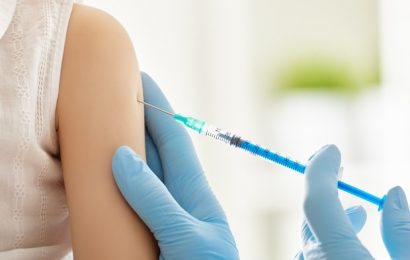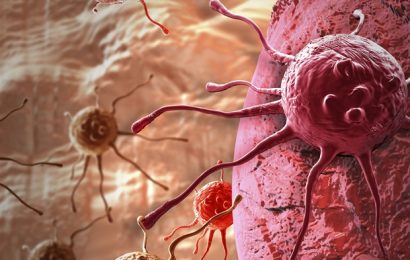Adaptive reliance on androgen signaling by castration-resistant prostate cancer cells becomes a therapeutic liability that can be exploited clinically through the administration of supraphysiological testosterone, an approach termed “bipolar androgen therapy” (BAT). The term bipolar is used to emphasize that, with this strategy, rapid cycling occurs between two extremes: from supraphysiological back to near-castration testosterone levels over a 4-week cycle.
The idea of using high doses of testosterone as treatment for men with advanced prostate cancer (CaP) may seem paradoxical, but this is the rationale of studies that are contributing to an ever-growing body of knowledge, particularly with the help of the Sydney Kimmel Comprehensive Cancer Center at Johns Hopkins University in Baltimore.
Therapeutic Rationale
Androgens can drive prostate cancer growth, thus providing the rationale for using deprivation of androgens as a first line of treatment for prostate cancer. Unfortunately, prostate cancer cells adapt to low androgen levels and eventually progress to a castration-resistant state.
Results of several studies have indicated a paradoxical decrease in tumor growth in prostate cancer models upon treatment with supraphysiological levels of testosterone. Evidence indicates several complementary mechanisms, including cell death and cytostasis, which might be responsible for paradoxical growth inhibition by supraphysiological testosterone.
The Resistance Phenomenon
“Hormone therapy” is a broad term used to describe any type of therapy that blocks testosterone production or action to treat prostate cancer. Although it is a misnomer because it is technically “antihormonal therapy,” the former term has stuck. Male hormones, including testosterone, are called androgens, and treatment to shut down male hormones is known as androgen deprivation therapy, or ADT.
Almost all men initially respond, sometimes dramatically, to ADT. In fact, with more than 90% of patients showing good response, often for many years, ADT can be considered the most effective single therapy for CaP. Pain improves, PSA levels plummet, and disease often melts away on scans. However, hormone therapy almost never cures prostate cancer. After this initial beneficial response, there is a period of dormancy where PSA levels are low and disease is not growing. Castration resistance is not unexpected, it is the inevitable outcome of chronic, prolonged exposure to androgen receptor (AR) blockade. The length of this period usually varies. However, between 1 and 2 years from the start of treatment, favorable conditions for cancer growth are again created by the increase in AR levels, which can increase 100-fold or more. This high AR level, paradoxically, makes the prostate cancer cells vulnerable to unexpected exposure to high testosterone levels.
New Treatment Paradigm
BAT is a therapeutic approach proposed in clinical study contexts in asymptomatic subjects with metastatic castration-resistant prostate cancer (CRPC). BAT involves administration of sufficient amounts of testosterone to rapidly achieve a supraphysiologic level of testosterone in the blood. The normal level of testosterone in the blood of a 70-year-old-man is 300–400 ng/dL. The testosterone level in a man on ADT is <50 ng/dL. BAT is achieved by injecting a long-lasting (depot) generic form of testosterone known as testosterone cypionate into the muscle of the buttocks every 28 days. The term “bipolar androgen therapy” was coined to reflect the fact that over a 28-day treatment cycle, the blood levels of testosterone oscillate between the polar extremes of supraphysiologic (1000–3000 ng/dL) to nearly castrate (100–200 ng/dL). For this to occur, all patients should continue to receive concurrent ADT throughout treatment with BAT, and ADT should not be stopped when BAT is administered.
Currently, BAT is not recommended in CaP patients with secondary bone pain, a consideration that prevents its improvement being deemed an indication of response. However, BAT can improve other symptoms such as fatigue, muscle strength, and sexual function that are the result of androgen deprivation. In patients in whom a clinical benefit is seen after BAT, there is not always a reduction in PSA levels, and this makes its interpretation as part of the overall assessment of the response to treatment complicated. However, BAT has been shown to be highly effective at restoring sensitivity and disrupting resistance to antiandrogens.
The key findings from these clinical studies of BAT are the following:
-
It can be administered safely to asymptomatic patients with metastatic CRPC.
-
It does not produce symptomatic disease progression.
-
It produces sustained PSA and objective responses in 30%–40% of patients.
-
It can resensitize and prolong response to subsequent antiandrogen therapy.
These results can be used as a basis for further studies to determine the best way to integrate BAT as a treatment for castration-resistant CaP.
This article was translated from Univadis Italy.
For more news, follow Medscape on Facebook, Twitter, Instagram, YouTube, and LinkedIn
Source: Read Full Article


